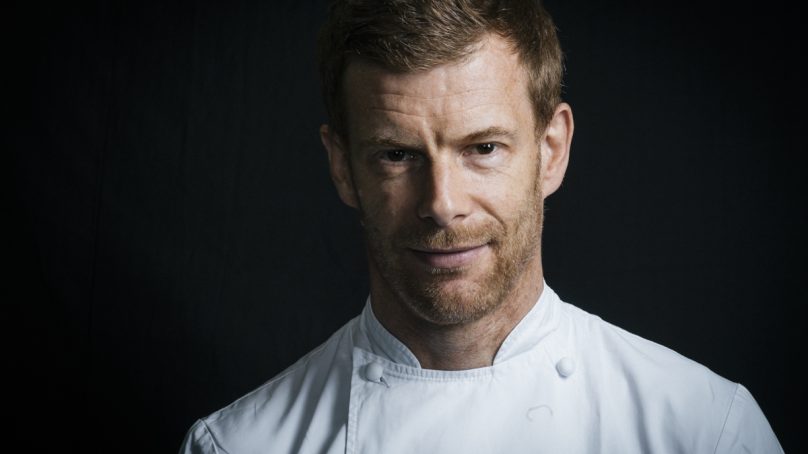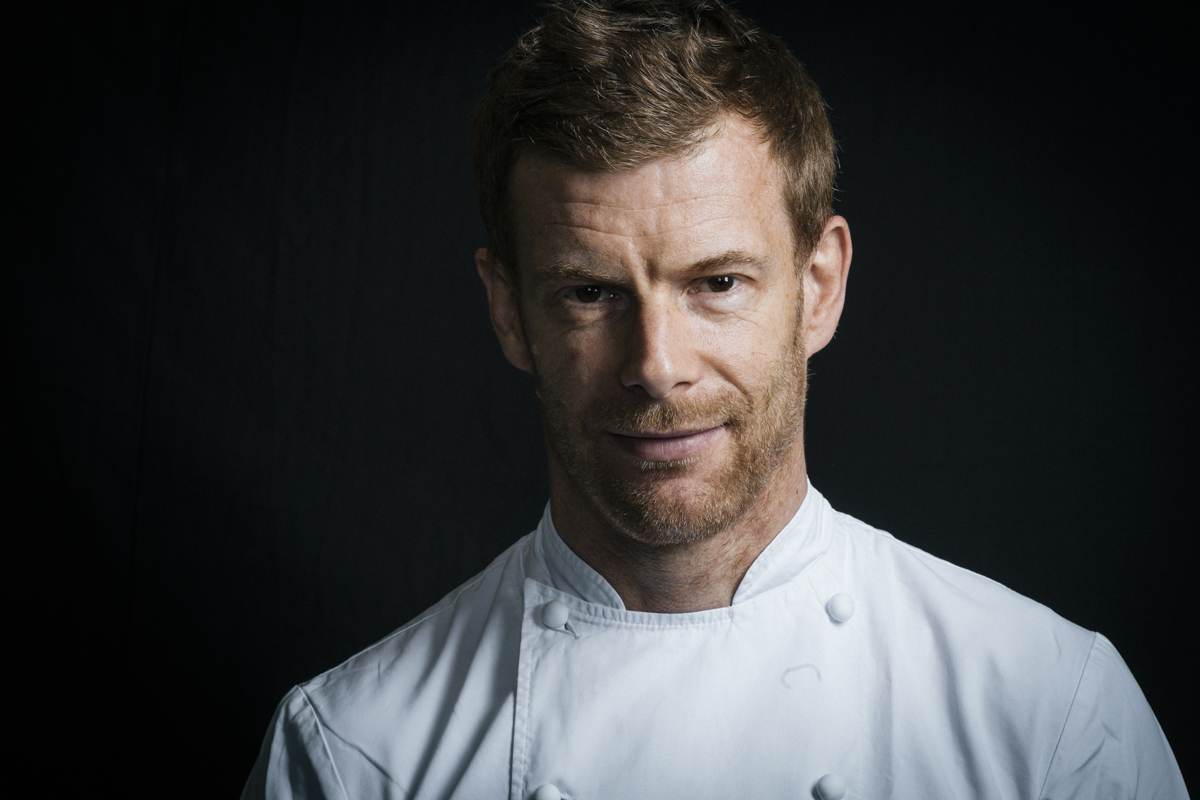Tom Aikens is one of the most accomplished and inspiring chefs in the world. In this exclusive interview, we discover what led him to a career in the kitchen and how he runs his restaurants.
What can you tell us about your journey to the top?
I was inspired to become a chef thanks to my mother’s love of home cooking and my twin brother’s desire to be a chef. I enrolled at the Norwich City College Hotel School and completed an advanced catering diploma in 1989. After college, I went straight to London and submitted my CV to 15 different hotels and restaurants, but everyone came back with the same answer. I then wrote to David Cavalier at Cavalier’s restaurant in Battersea, London, who offered me a place in his kitchen for free for six months. When the time was up, I was offered a paid job. David believed in me and gave me a job with Pierre Koffmann at La Tante Claire. It was exhilarating and exciting; I worked there when it transitioned from two to three Michelin stars. I worked for Philip Britten at the Capital Hotel, Richard Neat at Pied-à-Terre and then at the three-Michelin-starred restaurant Joël Robuchon in Paris. This experience was mind-blowing; I was only 24 years old and working at one of the best restaurants in the world.
The kitchen was dreamlike, exceptional and beautiful. We worked with 30 chefs and 30 front-of-house staff for a 65-cover restaurant. Robuchon ran the service and kitchen like an army operation; each section had between two and six chefs, and no one was allowed to speak to Robuchon or ask him any questions, so you had to concentrate all the time and note everything down as the orders came. It was a very quiet kitchen, unlike Koffman’s, which was more vocal.
The quality of the produce at the restaurant was outstanding — fresh items such as truffles, cepes, wild strawberries, fresh almonds, peaches and Perigord truffles. One chef was responsible for looking after the truffles, weighing them, slicing or choking them and handing them out to each section. The poulet de Bresse with Périgord truffles was a favorite dish, with thick slices of truffles pan-fried in butter, de-glazed with Madeira, a little white chicken stock and cream and poached in a truffle stock. Truffle macaroni was roasted in butter and coated in chopped truffles, then coated in cream and Parmesan. The smells and tastes were sublime.
I lived near the Gare de Nord, which was about 45 minutes away from the restaurant, so I had to get up very early and be in the kitchen by dawn. We would work for 19 hours. By the time we finished, it would be 1:00 am. I can honestly say that it was one of the most exciting places to work, and I was truly grateful to be there each day.
I then worked for Gerard Boyer at Les Crayeres in beautiful Reims. It was a world away from Robuchon; you had one morning team and one evening team and worked a maximum of 10 hours a day, so it was much more relaxed and less stressful.
When I was 25, David Moore from Pied-à-Terre called me asking me to become a co-owner. I thought long and hard before deciding. I remembered how back in college a teacher had told me that I wasn’t good enough and would never amount to anything. From that moment, I had it in my mind to be a head chef by the age of 26, because if I were not, I would be a failure. It was a momentous coincidence, as this was my opportunity to be a head chef at 26. Pied-à-Terre is where I became the youngest British chef ever to be awarded two Michelin stars.
After I left Pied-à-Terre in 2000, I went to work on a farm, helping Carole Bamford set up Daylesford Organic. I got to know about how a farm works and functions. I even worked in the abattoir, so I saw the whole process from start to finish. This was a real eye-opener, and it’s where I learned to value produce and where it comes from. I looked at the different breeds of chicken and lamb for all their different uses. Carole was a great person to work. She was very dedicated to organic food and had an incredible work ethic. I had some great times working with her, seeing a clear vision built from nothing is always a huge inspiration. The link between farm and chef was really missing in the restaurant scene in London back then. I can confidently say that I was one of the first chefs to truly pioneer this. It led to the launch of Tom’s Kitchen, which was to truly celebrate and embrace great British suppliers and producers for farm-to-table cooking.
Can you describe your cooking style and the creative process behind developing a new dish or menu item?
The two chefs that really shaped my career and inspired me were Pierre Koffmann and Joël Robuchon, who were both very different chefs in terms of style and how they ran their kitchens. Pierre Koffmann received his third Michelin star when I was working for him at La Tante Claire, and it was amazing to be part of that. He had a real gastronomic cooking style — very flavorsome and tasty food with beautiful complex sauces. He focused on building flavor and not so much on what the food particularly looked like; it was more substance than style. A loud and outspoken chef in the kitchen, he was a great teacher and spent valuable time training me on the fish and meat sections. Thanks to him, I became a serious whizz at filleting and prepping fish. Joël Robuchon, on the other hand, was very quiet; there was no talking in his kitchen, and you never ever interrupted him. If you messed up, you were dismissed on the spot. I saw some line chefs leaving the kitchen in the middle of their shift. He was religious about precision and attention to detail as well as flavor, of course. They both used amazing produce, the best I had ever worked with at that point. My style is a mixture of both of theirs. I love the intricacy of a dish; however, it must have a great flavor as well.
What are some of the biggest challenges you face as a chef and how do you overcome them?
Maintaining consistency and ensuring everything is top quality throughout all my restaurants is the most important. I have restaurants in Abu Dhabi, Doha, Jakarta, Tokyo and, of course, London. Each country has different sets of employment rules and regulations, and obtaining visas for staff isn’t always straightforward. Maintaining the correct staffing level in today’s climate is challenging, and this is why having the right team is fundamental. I spend a significant amount of time training my staff to ensure they evolve and always feel motivated. Hospitality is going through a rough patch with a shortage of staff, largely due to Brexit and Covid-19, so we try to do as much as we can by organizing team-building staff trips and offering three days off. We also provide delicious staff food that’s prepared with great pride; and, most importantly, we have a lovely open kitchen that gets natural light all day.
How has your experience working in Michelin-starred restaurants influenced your approach to cooking and running your own restaurants?
When working in Michelin-starred kitchens, you must operate seamlessly, so communication within the team is imperative. You learn important skills, such as teamwork, structure, routine and consistency, which is what really defines a great restaurant.
What are your plans?
I am always interested in working with other groups of like-minded people in different regions across the world. It is exciting for a chef to develop innovative dishes with new ingredients. It’s interesting to see how different teams across the world work, as there is always something you can take away from working with a new group of people and apply within your own workforce.



















